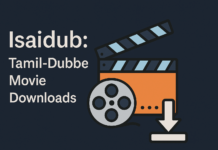Contrary to what most people think, Ethereum is not a cryptocurrency but it is a blockchain-based software platform that supports the world’s second most well known cryptocurrency, known as Ether. For a better understanding, we will discuss Ethereum in a little more detail.
The Ethereum blockchain technology is mainly used for exchanging finances, normally with the help of blockchain’s very own cryptocurrency, Ether. However, a lot of people are promoting the use of Ethereum’s blockchain technology because of its long term potential and because it gives users more control of their online data and finances. Ethereum is also sometimes referred to as a “world computer”.
Ethereum users have total control because of the blockchain technology. Blockchain technology decentralized all the data that is stored and recorded and thousands of people around the globe are given a copy of it. Ethereum has been used by developers to create leaderless applications, which means that a user’s data that has once been entered can not be altered or modified even by the creators or the developers.
Blockchain technology was introduced when the first cryptocurrency, Bitcoin, was launched in 2009. The idea of expanding the blockchain technology was later proposed in 2013 by a nineteen year old developer, Vitalik Buterin. In 2014 he was one of the co-founders of Ethereum blockchain platform.
Bitcoin was created as a means of exchange, which is also why it is sometimes referred to as the future of money. However, Ethereum was created to use the same technology that Bitcoin uses for the purposes of replacing third parties, such as those that store data, keep track of financial instruments and transfer mortgages. There are so many ways in which this can help people. Ethereum is the world’s biggest blockchain network for decentralized applications. We will talk about this in more detail later.
How To Use Ethereum
We have already discussed that Ethereum aims to give users more control over their online data. However, to use Ethereum, it is important to learn how to buy, store and use Ethereum’s native cryptocurrency, Ether.
If the Ethereum protocol, which is also referred to as the “world computer,” develops as it is expected to, it would be possible to develop alternatives to tech platforms that many people have come to depend on, such as Google and Facebook. Any such alternatives would allow users to have more control over their online data.
The control that will be given to the users will not come for free. Every action on Ethereum’s platform, no matter how small or big it is, will at least cost a little bit of Ether. Users can accept a variety of apps on the platform if they can pay the Ether fees.
Since the computing resources of the Ethereum platform are limited, these decentralized apps, also known as dapps, are not free. The higher the number of people using the Ethereum platform, the more the fees. Right now the fees are relatively high because the number of services that interact with Ethereum right now is quite high.
However, it is worth noting that Ethereum is still considered to be a work in progress and a network upgrade, Ethereum 2.0, is gradually being phased in to tackle the underlying scalability issues. That could improve the security of the network and push fees lower.
Ethereum’s platform has become the platform of choice for dapp development.
How Ethereum Works
For a better understanding, we can compare many of the apps that we use everyday. These apps have companies that exercise control over these apps, mainly to make the app work. For instance, YouTube stores videos that people can watch, Robinhood holds people’s money for investing in stocks and Facebook records detailed sensitive information about the users.
On the other hand, Ethereum is a platform which allows development of decentralized applications (dapps). Decentralization here means that these applications will not be controlled by any company, or a central authority figure, instead they will be governed by code. This will give more control to the users themselves. There is a worldwide infrastructure under the hood that makes sure these dapps work smoothly.
Ethereum draws inspiration from Bitcoin’s network and its underlying blockchain technology, but Ethereum also adapts the technology to support applications beyond finance. In simple terms, a blockchain is an ever-growing, decentralized record of transactional data. A copy of this list of data or records in the form of blockchain is held by each computer in Ethereum’s network.
Decentralized Applications
Dapps or decentralized applications offer services just like those that are offered by normal consumer applications, however, dapps use blockchain technology to give users more control over their online data. The requirement of central authority or a third party intermediary to manage the data is eliminated, thus making the service “decentralized.”
In today’s world, digital applications are everywhere. We use digital apps for sending emails, making payments, looking for places and so much more. Under traditional models of ownership and control, the users are normally required to give out personal information to the company that has created the application and provides the services.
Alternatively, with a dapp or a decentralized app, users have much more control over their personal information and finances since they are not required to trust any company to record the data safely. However, some people are not easily convinced that this will work in practice.
The founders of Ethereum wanted to make it easier to create these kinds of apps. While it is true that there are many challenges, progress can still be seen. Today, hundreds of decentralized applications exist on Ethereum, including a decentralized alternative to twitter and virtual reality games.
A lot of these dapps on Ethereum may be slow and difficult to use, but they show the potential benefits of decentralized applications and how they may take over in the near future. It is hoped that the network upgrade, Ethereum 2.0, will ease these problems in the next few years.
It is important to understand how dapps work. A decentralized application created on Ethereum will make use of blockchain technology to connect the users with each other directly, without the need of any intermediary third party or a company. With the help of blockchain technology, a distributed system can be brought together, where each of the users will have a copy of the records. Users do not need to submit their private information out to any third party, which means that they do not have to give up control of their data to anyone else.
Centralized applications, that we use everyday, have control over the data that flows into and out of their networks. This is because of their centralized nature. The central authority figure, or the company that owns the app, will have control over the data of the customers. For instance, an app that helps you manage your finances will have the power to stop a transaction from being performed, just like Facebook or Twitter have the power to delete posts from their platforms. Dapps, on the other hand, give users the control and it is almost impossible for anyone to remove anything at all.











